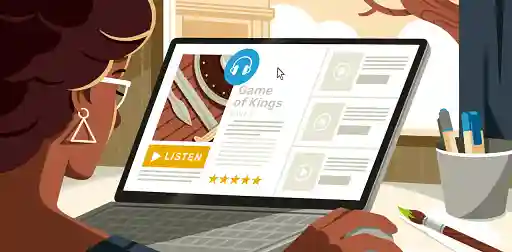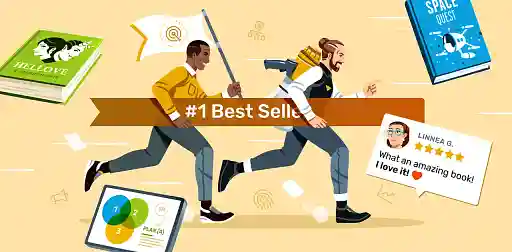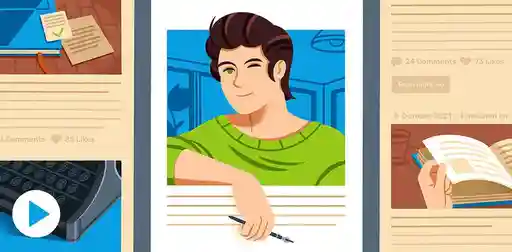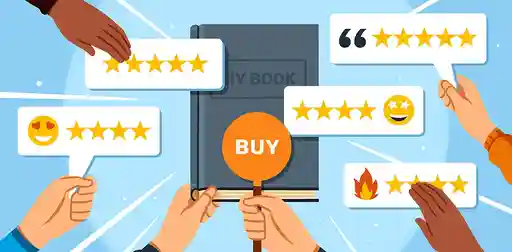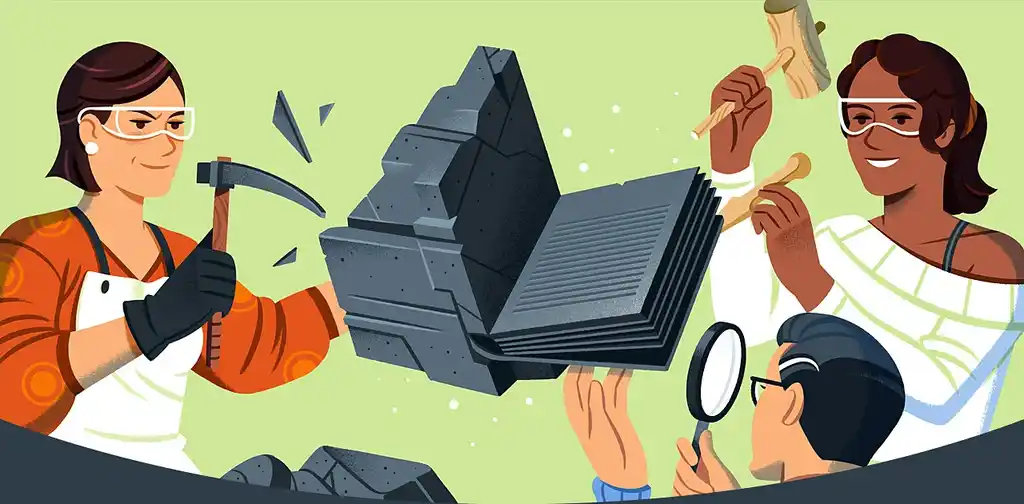Posted on Nov 20, 2019
How to Market a Nonfiction Book: 5 Steps to Selling More Books
Ricardo Fayet
Reedsy co-founder and Chief Marketing Officer, Ricardo Fayet has worked with hundreds of authors on their launches and marketing campaigns. He is the author of two bestselling guides on marketing for authors, and a regular presenter at the largest writers' conferences.
View profile →So, you’ve written a nonfiction book? Nice one! Give yourself a well-earned pat on the back, but don’t rest on your laurels just yet. Because there's still a long road to achieving sales ahead, and the first step is to knuckle down and learn… aboout marketing a nonfiction book.
In this post, we’ll draw from the wisdom and experience of countless nonfiction authors who have succeeded in publishing (and self-publishing) a book in this exciting digital age. By the time you’re done reading this, you’ll know exactly what you need to do to get your book in the hands of readers.
First things first. Nonfiction is an enormously broad category. It can include anything from biographies and textbooks to cooking bibles and thesauruses (or is it thesauri?). For now, we’ll disregard academic texts, memoirs, creative nonfiction, and reference books — they are somewhat unique in how they’re marketed. When it comes to marketing, memoirs tend to be more like novels than other nonfiction books.
Here's a free course that can help you with how to market your book, regardless of what you categorize it as:

FREE COURSE
Book Marketing 101
Learn seven tried-and-true strategies for boosting book sales.
For this post, however, we’ll define nonfiction as “books that solve a problem.” Those problems can range from:
- How to care for a newborn (childcare book);
- How to run a start-up (business book);
- How to be happier in life (self-help);
- How to fix a leaky faucet (DIY).
As we progress through this guide to marketing a nonfiction title, we’ll keep coming back to this idea of your book’s ‘central problem.’ It’s not an exaggeration to say that it’s the key to sales.
Also, this post assumes that your book is well-written, professional-looking, and useful to readers. Everything relies on your book being good enough for people to recommend it to others. This is the price of admission — which is why we always suggest authors work with beta readers and nonfiction editors to get honest feedback and advice before they spend any money on their launch.
Okay, fire up your marketing engines, and let’s get started.
Step 1: Develop the core message of your nonfiction book
Before you pay for any ads or send out your first newsletter, you need to know your “message” as an author. Think of this as your elevator pitch or your core message:
- Who is your book written for?
- What is their problem?
- How does your book solve that problem?
- Why should they listen to you?
Now, let’s take them one at a time:
Who is your book written for?
“Oh, that’s easy,” you might think. “My book will be of interest to anyone with eyes. It’s that great!”
To quote a certain beet farmer/paper salesman: false. While your book may have broad appeal, it first needs to find its core audience — those who will most benefit from reading it.
Say that your book is a beginner’s guide to childcare. Your target audience would obviously be “expecting first-time parents.” But you can also go deeper. Does your book consider parents who live in a city, the suburbs, or in a rural area? Might both parents work full-time — if there even are two parents?
If you’re able to show your readers that this book is written with someone like them in mind, then half the battle is won.
Learn more
What is their problem?
We already touched on this in the introduction. Every nonfiction title needs to solve a problem. On the dust jacket of many books, you’ll see that problem written as a question:
- Can’t find time in your busy day for self-care?
- Spending too much money on simple domestic repairs?
- Are you struggling to scale your business fast enough?
Marketing offices all over the world obsess over what they call “pain points” — problems your customers have that can only be solved by your product. Do the same thing for your book: look at your target reader and see what troubles them. Which takes us onto our final point...
How does your book solve that problem?
Chances are, your target reader’s challenges are not unique and there are already other books on the market that (claim to) solve it. So you need to show how your book is different from — and better than — the competition.
Does your book provide step-by-step instructions for beginners? Will it supply new insights based on ground-breaking research? Will readers get more out of it because it’s less stuffy and more humorous in its approach to a subject?
Why should they listen to you?
In most cases, the kind of nonfiction we’re talking about is written by authorities in their field. If you’re writing a book about DIY plumbing, it helps if you’re an experienced plumber. Or, even better, if you’ve trained hundreds of plumbers and you’re now ready to do the same for your reader.
What if you don’t have any relevant professional credentials? Try using your personal story. There are plenty of hit self-help books based on the author’s experiences. For instance, look at Instagram influencer Vex King, who published the bestseller Good Vibes, Good Life: How Self-Love Is the Key to Unlocking Your Greatness. Its Amazon description notes how:
Vex overcame adversity to become a source of hope for thousands of young people, and now draws from his personal experience and his intuitive wisdom to inspire you...
The author bio further reveals how King was raised by a single mother and survived homelessness, racism, and violence as a child — and how he emerged on the other side to find success in fashion and music. King has hundreds of thousands of followers (which is great for creating social validation). Still, his personal story is what provides readers with a reason to believe he is qualified to tell others how to improve their lives.
Once you establish who your readers are, what their problem is, and why you are the one to solve it, we can synthesize that into your book’s description.
Learn more
- Writing an Author Bio (blog + template)
- The Non-Sexy Business of Writing Non-Fiction (Free course)
Step 2. Nail your book description
Sometimes called the blurb or synopsis, the book description is effectively your pitch to readers. It appears at the top of your book’s page on almost all online retailers, so you want to nail it right off the bat.
We have an entire post on writing descriptions for your book, but basically, you need to get your core message across. Let’s look at the Amazon description for Matthew Syed’s Rebel Ideas: The Power of Diverse Thinking:

'A master of the genre' The Times
Success is no longer just about talent or knowledge or skill. Today, it is also about freeing ourselves from the blinkers and blind spots that beset us all and harnessing a critical new ingredient: cognitive diversity.
In this bold and inspiring new book, Matthew Syed - the bestselling author of Bounce and Black Box Thinking - offers a radical new approach to success and a route map to how we can tackle our most complex challenges, such as obesity, terrorism and climate change.
Rebel Ideas draws upon cutting-edge research in psychology, economics and anthropology, and takes lessons from a dazzling range of case studies, including the catastrophic intelligence failings of the CIA before 9/11, a communication breakdown at the top of Mount Everest and a moving tale of deradicalization in America's Deep South.
It is a book that will strengthen any institution or team, but also offers dozens of individual applications too: the art of personal reinvention, the extraordinary benefits of personalized nutrition and how to break free of the echo chambers that surround us all.
Rebel Ideas offers a radical blueprint for the future. It challenges hierarchies, encourages constructive dissent and forces us to think again about how success really happens.
A lot to unpack here.
Who is your book written for? The blurb says that it’s “a book that will strengthen any institution or team,” so we’re looking at leaders within organizations, probably. But it also seems to be targeting individuals seeking personal change — those who want success but feel limited in their talent, knowledge, and skill.
What is their problem? On a micro-level, it looks like the book purports to solve obesity through an understanding of “personalized” nutrition. On a macro-level, it offers readers a roadmap to success.
How does the book solve that problem? The description dazzles with promises of “cutting-edge research in psychology, economics and anthropology”.
Why should they listen to the author? He’s written two bestselling books — and has a rave review from The Times.
Spend some time polishing your product description way before you set your book up for sale. You’ll be using it time and again as ad copy, on social media, and anywhere else you’ll be discussing your book.
To get a headstart on a book description that sells on Amazon, we recommend downloading the free book description template below.
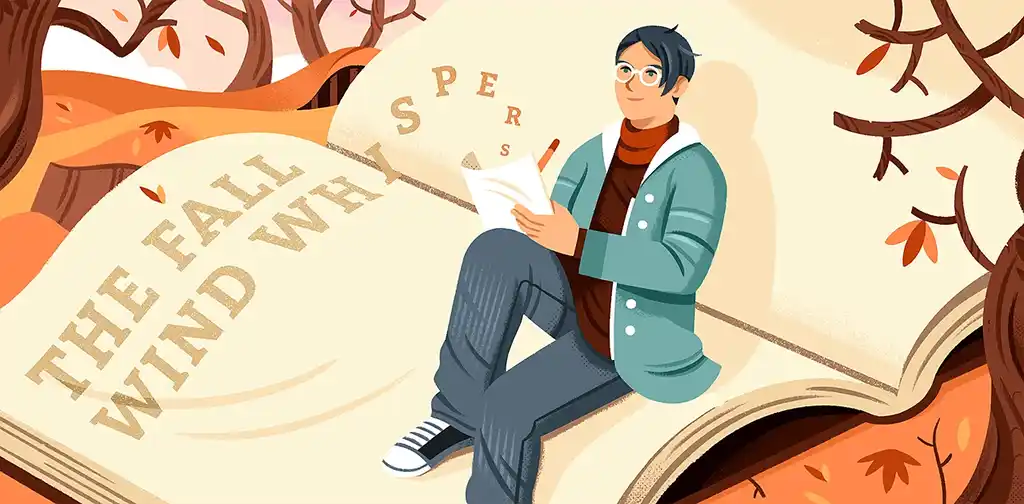
FREE RESOURCE
Book Description Template
Learn to write a book description that will make readers click “buy.”
And if you’d like a book marketer to help you hone this description, you can browse through the professionals on Reedsy and request a free quote.
Learn more
Step 3: Build Your Platform
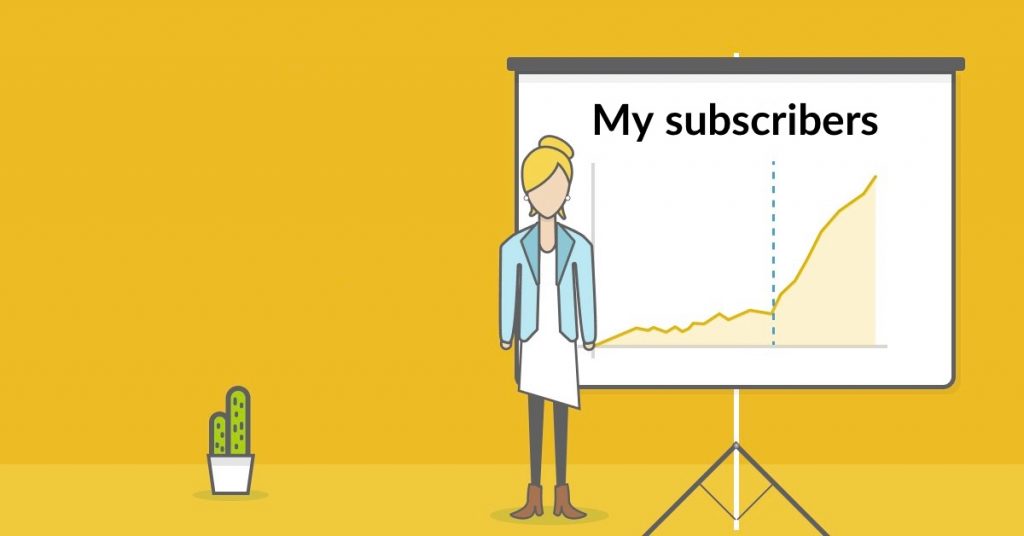
One of the big buzzwords in nonfiction publishing is ‘author platform’ — which is basically an author’s existing ability to reach an audience. Traditional publishers are always looking to publish books by people with platforms and will be reluctant to take on authors who do not have one. That is why Lisa Rinna from Real Housewives has several bestsellers to her name while your creative writing professor drinks herself to sleep each night.
Advertising can help attract sales. But if you want to sustain sales, most of your marketing muscle must come from your platform. This means getting more people to:
- Sign up to your newsletter
- Follow you on social media
- Find your website
- Read your blog
Let’s look at the first point here.
Newsletter Mailing List
Getting readers to buy your book naturally feels like priority #1 — but when they do, make sure they sign up for your newsletter! If a reader doesn’t end up on your mailing list, they’ll be pretty hard to reach when you have something else to sell (such as your next book).
Learn more

FREE COURSE
How to Build Your Author Mailing List
Learn how to connect with your audience and sell more books with email.
- Email Marketing for Authors (Reedsy page)
Website
A professional-looking website is no longer optional. It lets people find out who you are and what your books are about, and t it also gives you a hub for signing readers up to your mailing list.
When you land on an author’s site, you’ll often see a pop-up asking you to sign up for a newsletter in exchange for… something, maybe a free book or sample chapter. We call this a “lead magnet”: something you offer readers for free in exchange for their contact details.
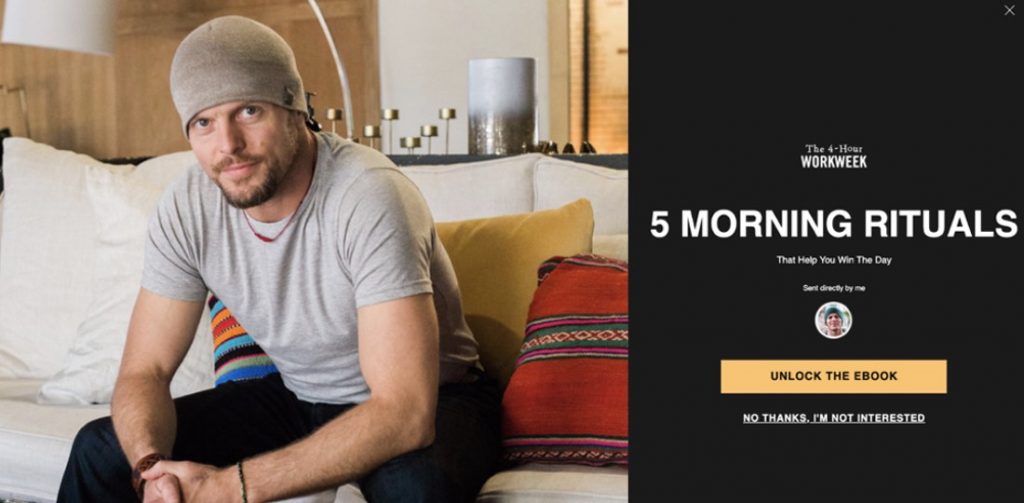
The great news for nonfiction authors is that creating a lead magnet is pretty straightforward. Simply refer back to your book's central problem and offer readers a valuable related resource. For example:
- If your target readers are coeliacs looking to eat better, you could offer them access to exclusive gluten-free recipes.
- If your book about filing taxes as a freelancer, offer a PDF calendar with all major submission dates for them to print and pin to their wall.
Most self-service web design apps like Squarespace and Wix provide options for creating lead magnets on your homepage. Look around at how other authors do it and see if any of their ideas would work for you. If you’re still not sure, you can always hire a professional web designer to take care of your lead magnet setup.
Learn more
Blog
As a nonfiction author, you have an advantage over novelists or short story writers: you can write regularly on topics of interest to your target reader. That’s where your blog comes in. Use it to discuss new ideas and provide solutions to existing problems.
We’ll choose a bit of a meta-example here. David Gaughran is an author whose nonfiction focuses on marketing for self-publishing authors. Just taking a look at his blog output from Summer 2019, you can split the posts into those two camps: discussing new ideas and providing solutions.
- Time To Ditch Mailchimp? (New ideas)
- Moving from Mailchimp to MailerLite: A Guide (Solutions)
- How To Find Your Comp Authors (Solutions)
- BookBub Ads – What the FAQ? (Solutions)
- Coming Soon: Big Facebook Ads Changes (New ideas)
- Email Marketing: Your Secret Weapon (Solutions)
- Audio Innovations and Superfans (New ideas)
David keeps abreast of the latest developments that affect indie authors and hears their reaction to this news. He's able to see their perennial ‘pain points’ and creates blog content that addresses them.
Case in point: MailChimp, the world’s most popular email service, announced changes to its subscription fees. This changed the amount that indie authors paid to maintain their mailing lists. David discussed this in his post “Time to Ditch MailChimp?” and soon followed it up with a how-to guide to migrate subscribers to a cheaper solution.
Your blog will give certainly you somewhere to send your existing fans. But ideally, it's also where your future readers will discover you when they look up relevant topics on search engines. That's where SEO (Search Engine Optimization) comes into play.
Make sure that Google and other engines can accurately read your site's content, and ensure you've written your posts in a way that lets them rank on the first page for relevant searches. For more on the basics of SEO and crafting your content plan, check out our free course on blogging as an author.
Learn more
- How to Build Your Own Blog as an Author (Free course)
- How to Turn Your Blog in to a Book (blog)
Social Media
Social media is a double-edged sword. We all know that it’s a vital part of modern communication. But it can also be a trap: some authors obsess over social media so much that they barely have time to write. With this in mind… don't lose sleep over social media unless:
- You're a "natural" of that particular platform: i.e., you enjoy using it and have shown to be able to build a following there; and
- Your target market actually uses that site.
Here's a quick look at a few popular social media platforms, and why they might be of interest to you.
- Twitter: join discussions relevant to your field by following its biggest influencers.
- Instagram: great for specific niches. Tag your posts with the right #hashtags to get them in front of interested users.
- LinkedIn: fantastic for business-oriented writers, but not much else.
- Reddit: where enthusiasts sign up to hear about specific topics.
- Quora: lets you answer questions that users ask. If your response is deemed useful, your answer can reach thousands of relevant users.
Learn more
- Growing Your Influence as a Non-Fiction Author (Free course)
- How You Can Use Twitter Most Effectively as an Author (blog)
Step 4: Advertise and promote your book
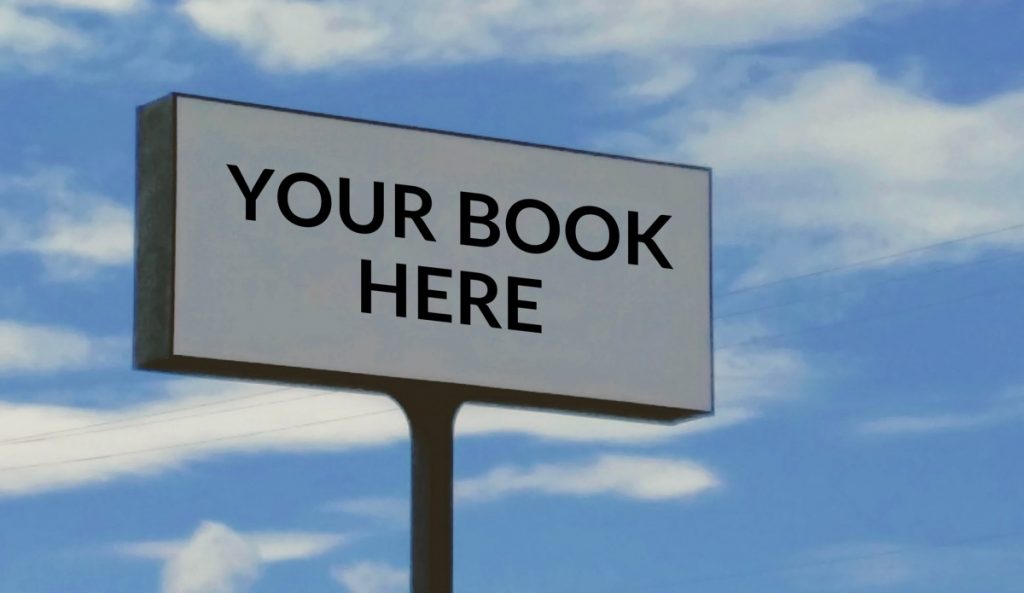
If you imagine your book plastered on billboards near Times Square, you might have to dream a little smaller — at least for now. Until you’re promoting the next mega-blockbuster book, traditional advertising is a massive waste of money. That’s because, of all the people who will see your ad, only a teeny portion of them will be part of your target audience. That’s where digital ads come into play.
Facebook and Amazon ads
For advertising nonfiction books, the only two platforms that really matter are Facebook ads and Amazon ads.
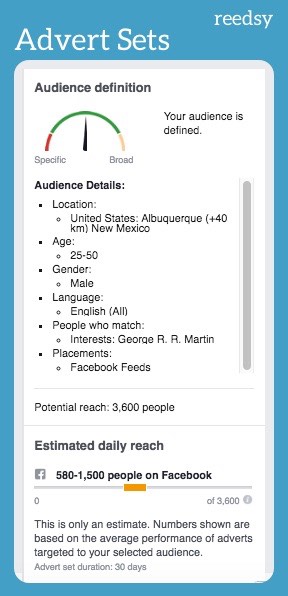
Facebook is terrific for the same reason people are terrified of it: they have an incredible amount of data on all of their users. This lets advertisers (like you!) target users with astonishing accuracy.
If the target audience you’ve chosen is “mothers in Ohio who love to do woodwork,” then you can reach them — and get them to either buy your book or sign up to your newsletter. Facebook advertising has a lot of powerful features that authors can leverage to great effect. The best part? You don’t have to spend a fortune to test it out. You could try it out with as little as $5 a day.
Similarly, Amazon’s advertising platform lets you place your book in the “sponsored products” slots. Akin to Amazon’s also boughts (“Customers who viewed this item also viewed...”), sponsored products appear on every page on Amazon. They allow authors to advertise their books to readers browsing similar titles.

You will also start showing up on search results. When you perform a search on Amazon, you'll see that 40%-60% of the results on the first page are "sponsored products." Not bad, right?
As an advertiser, you can either let Amazon choose where to display your sponsored book or take a bit more control. That would mean picking individual keywords and similar books and then bidding for placement within those pages. Yes, it is a bidding system. If you want your self-help business book to appear on the product page for the evergreen classic How to Make Friends and Influence People (see above), you will have to pay more than to appear under a less famous book.
With both Facebook and Amazon advertising, the ability to understand your target reader and comparable titles will pay dividends when it comes to advertising.
Learn more

FREE COURSE
Facebook Ads for Authors
In 10 days, learn to boost book sales with targeted Facebook ads.
- Amazon Ads for Authors (Free course)
- How to Use Facebook Ads as an Author (blog)
Reviews
With the internet at your fingertips, you probably search for reviews before buying anything, whether that’s a car or a new set of headphones. The same goes for publishing. Between editorial reviews in the New York Times and user reviews on Amazon, you likely scope out others’ opinions of a book before you commit to an author you’ve never heard of.
You need to get reviews as early as possible — if you don’t have any user or editorial reviews on the first week of your launch, you’ll be fighting an uphill battle. So send copies of your book to reviewers weeks (if not months) ahead of your launch.
Editorial reviews
Self-published novelists often struggle to get traditional print and online outlets to review their books because of the sheer number of novels published each week. As a nonfiction writer, you have an advantage in that there might be blogs, societies, and trade magazines within your niche that aren’t inundated with new books every month. It’s your job now to compile a list of suitable blogs and publications and contact them early to ask for review consideration. For detailed tips on how to do this, check out this free course.
User reviews
Assuming you have been growing your mailing list, you should have a decent group of people that you can contact for a review. You can mail them weeks in advance of your launch and offer them a free digital copy — sometimes known as an Advanced Reader Copy (ARC) — and ask for a review. Then, when your book goes live, they can head to Amazon, Kobo, B&N, and any other retailer to leave you a review.
According to Amazon’s terms of use, giving away free books in exchange for a review is totally fine. But you must be clear that the free copy is not conditional on them giving you a review. Also, you may not attempt to influence the review.

As a general rule of thumb, you need at least 10-20 user reviews on a retail page to seem legitimate to readers. They don’t have to all be 5-star ratings, and, in fact, a perfect score can seem really fishy — so don’t sweat the occasional tepid review.
Learn more
- Book Reviews and How to Get Them (Free course)
- 5 Simple Steps to Get Readers to Start Reviewing Your Books (blog)
- The Best Book Review Blogs (Directory)
- Reedsy Discovery (Review platform)
Price Promotions
There are plenty of good reasons to run a price promotion on your book. When you discount your book (or make it free) for a limited window, you’ll sell more copies. That’s simple supply and demand. But running a price drop or giveaway also opens you up to a world of promotional opportunities.
If you are selling your ebook exclusively with Amazon, KDP Select will let you access the Countdown Deals and Free Promotions areas — where plenty of bargain hunting readers can find your book.
When your book is on a promotion, you can also get additional exposure through online services where readers find the latest deals (and get notifications about them by email). BookBub is the largest and best-known of these promotion services. While it's notoriously hard to get novels featured on BookBub, the nonfiction side of their business is much less competitive. There are also plenty of smaller sites offering similar services: they're honestly quite insignificant for nonfiction but, as a result, they're pretty cheap. Find a list of them here!
Learn more
- How to Run a Price Promotion (Free course)
- BookBub Ads for Authors (Free course)
The BookBub ads course is written by David Gaughran (of “being mentioned in this post” fame). It’s intended as an advanced course, so we recommend you take both the Facebook Ads and Amazon Ads courses before you tackle this one.
Podcasts

Did you know that over 31% of Americans listen to podcasts every month? It’s a growing statistic that will be hilariously outdated by the time most people read this guide. And with over 750,000 shows to choose from, you can bet there are podcasts with listeners that look almost exactly like your target reader! These shows are always looking for exciting, new content, and as the author of a book, you have precisely the authority that podcasters want from a guest! Find a way to contact a podcaster, be it through email or social media, and pitch them your story.
How can you search for podcasts? It can be as simple as Googling “[your topic] + podcast” or browsing through the categories on iTunes. Or, use this as an opportunity to engage your social media community and ask them what shows they listen to.
One note: when you pitch yourself as a podcast guest, you need to have a story. You can’t just say, “I’ve written a book, let me on!” — There needs to be a story or an opinion that you’re coming in to talk about. Ideally, it should be closely tied to the content of your book, but that’s not 100% necessary.
Traditional Media (Advanced)
TV and national publications are tough for self-publishing authors to access. The producers and editors of these outlets tend to deal with industry insiders only, which is where publicists tend to earn their money. Traditional media also has the same problem as traditional advertising: it can be very unfocused.
If you have your heart set on traditional coverage, you could consider local radio and television (morning shows are notoriously desperate to book interesting guests). There are tips for pitching your story in the course we link to below — but this might take more time than it’s worth unless your target audience is very local. The author of 150 Things to Do in Spokane Before You Die, for example, would definitely want to get on local TV in Eastern Washington State.
Learn more
- How to Get Your Book Covered by Mainstream Media (Free course)
Step 5: Take care of your subscribers (and monetize them)
We’ve arrived at the final stage. Assuming that you’ve built your platform, cracked your core message, collected reviews, promoted your book, sold copies, and added readers to your mailing list... you should now have a body of readers who have read your book and enjoyed it.
So what’s next? You could write a second book to sell to this crowd — that’s a great idea! You already have this captive audience who (ideally) enjoyed your first title and will want to read your next one. But seeing as it could take you months or years to produce your second book, you need to keep these subscribers warm in the meantime. That’s why blogging can be so important — it keeps you in the mind space of your readers and will provide you with a good reason to send them regular newsletters.
Your newsletters don’t have to go out every week. In fact, you don’t want to be too needy, as this could lead to a lot of unsubscriptions from your list. Once a month is often enough. Be selective with what you share with your mailing list and try to make it as useful and relevant to your readers as possible — that way, your missives can become an indispensable part of their lives.
Monetize your readers
Believe it or not, most non-fiction authors can’t pay the bills on book royalties alone. Even if you make a $4 profit on every copy, you’ll need to sell almost 9,000 copies every year before you reach the average starting income of a teacher in the US.
The most successful and self-sufficient authors understand that publishing a book is not the end goal — but a tool that will feed their real income stream. Authors who write books on corporate recruitment will leverage their mailing list to promote their consultation services. Have you written a self-help book? Maybe offer paid online courses or organize annual retreats. Did you write that hypothetical book on childcare we talked about? How about launching a paid video course that shows readers how to take care of a three-month-old?
Because you’ve earned your readers’ trust by solving the problem that you identified in your core message, you’ll have your foot in their door. If they loved your book, then they’re perfectly primed to listen to any other relevant pitch you might have for them. Some of the ways you can monetize your readers include:
- Providing paid video courses
- Offer consultation services over Skype or in-person
- Selling relevant products or services
- Promoting quality products with affiliate schemes — where you get a kickback for every sale
- Publishing another book
Remember, getting your nonfiction book published is just the first step. If you’ve successfully marketed your book, then you’ve also successfully marketed yourself as an expert in your field. As long as you continue to identify your readers’ problems and solve them in unique ways, you’ll see yourself going from ‘some person who wrote a book’ to a genuine bestselling author!
Need an expert to help you plan your launch, set up your website, build your mailing list, and advertise to readers? Join Reedsy and meet our team of experienced book marketers.
Hire an expert
Brian B.
Available to hire
I 've helped hundreds of authors manage their Amazon and BookBub Ads campaigns
Kate L.
Available to hire
10 yrs marketing experience in consulting, launching, and promoting books. Specialized in sci-fi, fantasy, gamelit/litrpg, spec fic, LGBTQ+
Aryn V.
Available to hire
I'm a former HarperCollins marketing manager, now I'm working with indie authors and publishers on rockstar marketing strategy.
